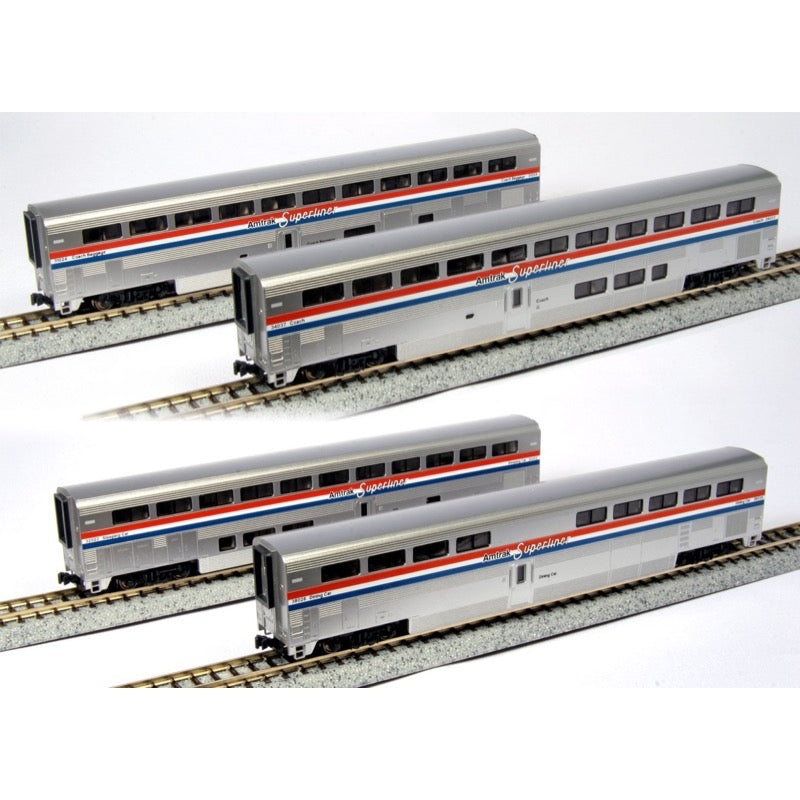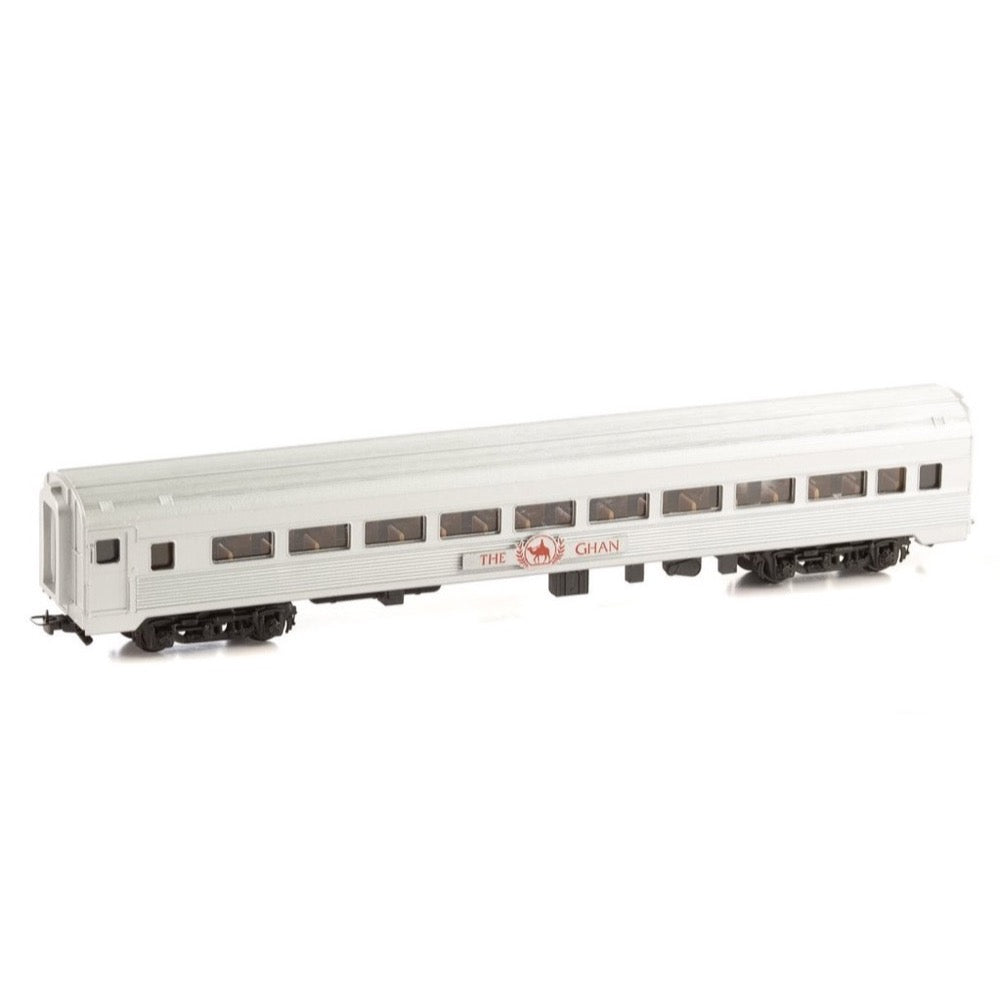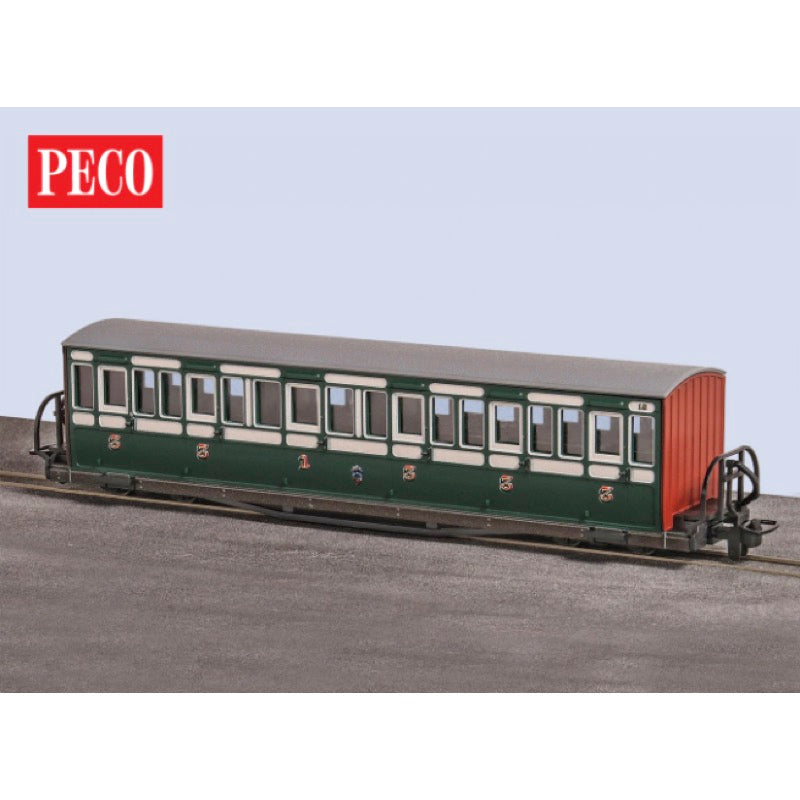
Peco GR601B GLT OO-9 FR Short Bowsider Bogie Coach Early Preservation Green 18
FR Short 'Bowsider' Bogie Coach - Early Preservation - Green 18
The four coaches in this group of vehicles were known as the 'Bowsiders' because of the shape of their sides, and were supplied by two builders in 1876 and 1879. Numbers 17 and 18 are the shorter coaches, delivered in 1876, and the two long coaches, numbers 19 and 20, arrived three years later in 1879. All four are in service on the Ffestiniog Railway today.
Our new models capture the subtle style of these coaches, with the 'bow' towards the bottom of the sides. The models feature very fine print detail too, including the Ffestiniog Railway company emblem. The livery is green with a cream trim around the upper half of the coach, and contrasting maroon end panels.
No. 17 wears this livery today. Fitted with metal-tyred wheels the coaches are lovely smooth runners.
PECO 009 Irregular and Mainline Code 80 Setrack and Streamline track systems
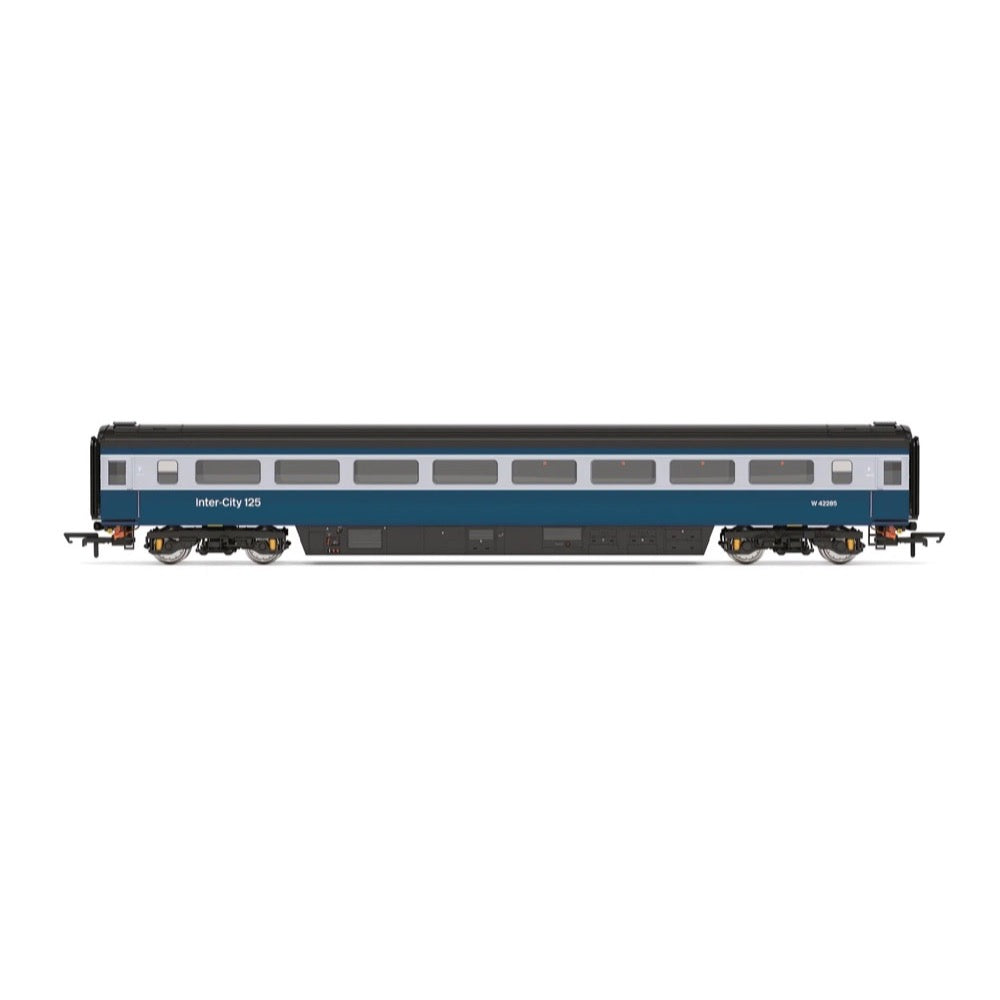
Hornby R40393 OO BR Mk3 Trailer Standard Open 42285 Era 7
In-order to allow running at 125 mph on Britain's Victorian era railways, new rolling stock was needed by British Railways. Significant improvements over the Mk2 included new secondary air suspension between the bogies and the coach body as well as aerodynamic skirting on the underframe.
Mk3 coaches are 75ft (23m) long enabling far greater capacity than older coaches. Mk3 coaches also incorporate disk breaks and wheel slip protection enabling faster deceleration. The first Mk3 coaches to be delivered were used as part of the HST prototype along with the two Class 41 diesel power cars in 1972.
Mk3 coaches entered service in 1975 along with the Class 43 forming the iconic InterCity 125 trainset. After the HST Mk3 coach variant was introduced, further Mk3 coaches were introduced to the West Coast Mainline for use as part of locomotive hauled trains. Whilst Mk3 stock is standard for HST units, the standard locomotive hauled stock is Mk3a.
Mk3a stock differs from Mk3 stock due to the inclusion of buffers as well as a different electrical system that uses motor generator units in each coach to power air conditioning and other ancillaries Mk3a stock was built until 1984, before 3B stock with improved seating and lighting was built from 1985 to 1988.
The Mk3 coach is perhaps most iconic in its original production livery of the BR Grey and Blue. It is in this livery that the coach, as well as the matching Class 43 units would be introduced, before high speed rail services in the UK would be rebranded into the Intercity Executive livery.
Following the privatisation of the Railway network, Mk3 coaches would find themselves in many colourful liveries, some harking back to the original blue and grey livery of times gone by.
These Mk3 coaches include the provision for lighting provided by the R7305 Maglight lighting unit, as well as fully detailed interiors and metal wheels throughout. For the first time, these coaches also include our new Buckeye style magnetic couplings.
Specification
- Item Length - Without Packaging (cm): 30.3
- Item Height - Without Packaging (cm): 5.5
- Item Width - Without Packaging (cm): 3.5
- Item Weight - Without Packaging: 0.158
- Item Scale: 1:76 Scale 00 Gauge
- Finish: Painted
- Colour: Blue and Grey
- Gauge: OO
- Operator: BR
- Designer: BREL
- Livery: BR Blue and Grey
- Minimum Curve (mm): Radius 2
- Number of Parts: 1
- Coupling Type: NEM Tension Lock
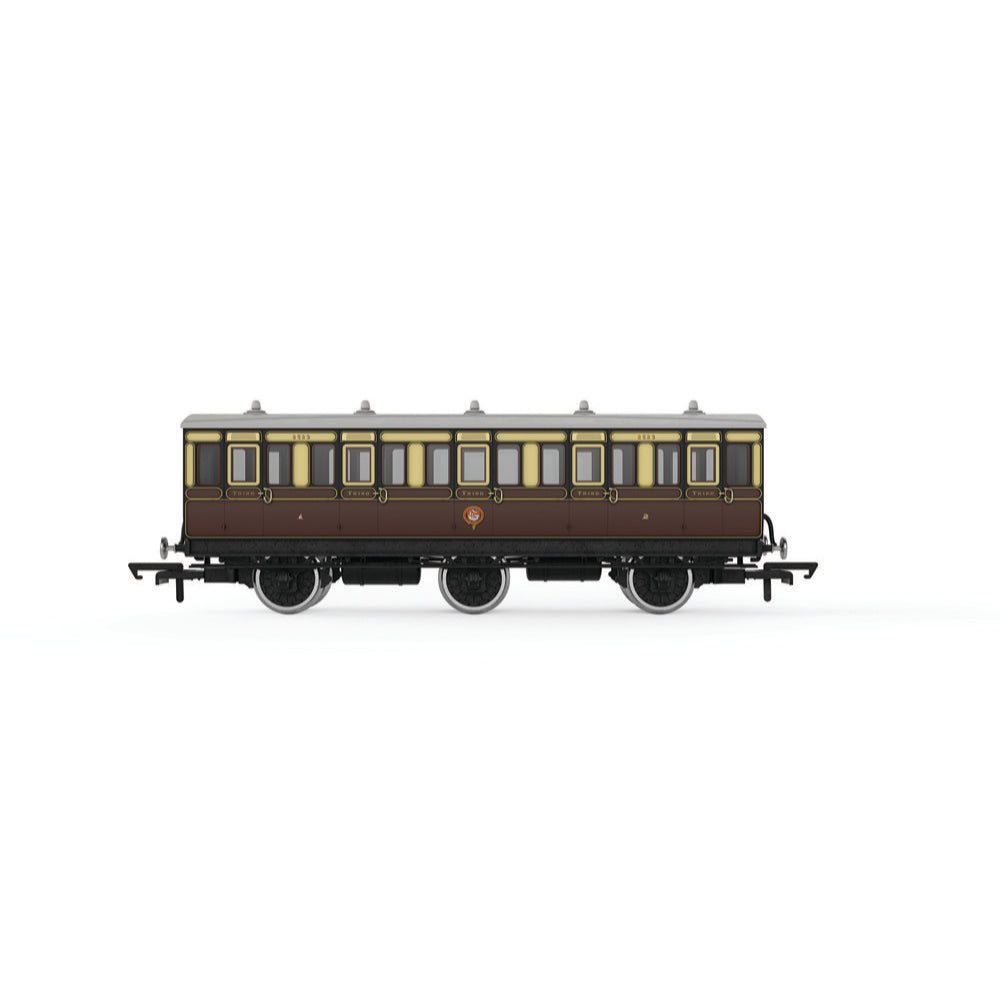
Hornby R40306 OO GWR 6 Wheel Coach 3rd Class 2523
This 6 Wheeled Coach is a representation of the hundreds which served on the GWR from the Victorian era onwards, proving especially good at branch line work where their small size enabled the traversing of tight radius curves, while lower passenger numbers meant their small size was more acceptable and enabled trains to be hauled by smaller engines.
Include
- 1x Rolling Stock Coach

Hornby R40231 OO FGW c. 2002. Mk3 Trailer Restaurant First Buffet (TRFB) 40736
In-order to allow running at 125 mph on Britain's railways, new rolling stock was needed by British Railways in order to replace the aging Mk2s. Significant improvements included new secondary air suspension between the bogies and the coach body as well as aerodynamic skirting on the underframe. Mk3 Coaches are 75ft (23m) long enabling far greater capacity than older coaches. Mk3 Coaches also incorporate disk brakes and wheel slip protection enabling faster deceleration.
The first Mk3 Coaches to be delivered were used as part of the HST prototype along with the two Class 41 diesel power cars in 1972. Mk3 Coaches entered service in 1975 along with the Class 43, forming the iconic InterCity 125 trainset.
After the HST Mk3 Coach variant was introduced, further Mk3 Coaches were introduced to the West Coast Mainline for use as part of locomotive hauled trains. Mk3A stock differs from Mk3 stock due to the inclusion of buffers as well as a different electrical system that uses motor generator units in each coach to power air conditioning and other ancillaries. While Mk3 stock is standard for HST units, the standard locomotive hauled stock is Mk3A. Mk3A stock was built until 1984, before 3B stock with improved seating and lighting was built from 1985 to 1988.
Includes
- 1x Rolling stock Coach
Technical Specifications
- Item Length - Without Packaging (cm): 30.3
- Item Height - Without Packaging (cm): 5
- Item Width - Without Packaging (cm): 3.5
- Item Weight - Without Packaging: 0.19
- Item Scale: 1:76 Scale 00 Gauge
- Finish: Painted
- Colour: Green
- Operator: FGW
- Designer: BREL
- Livery: FGW Green, White and Gold
- Minimum Curve (mm): Radius 2
- Number of Parts: 1
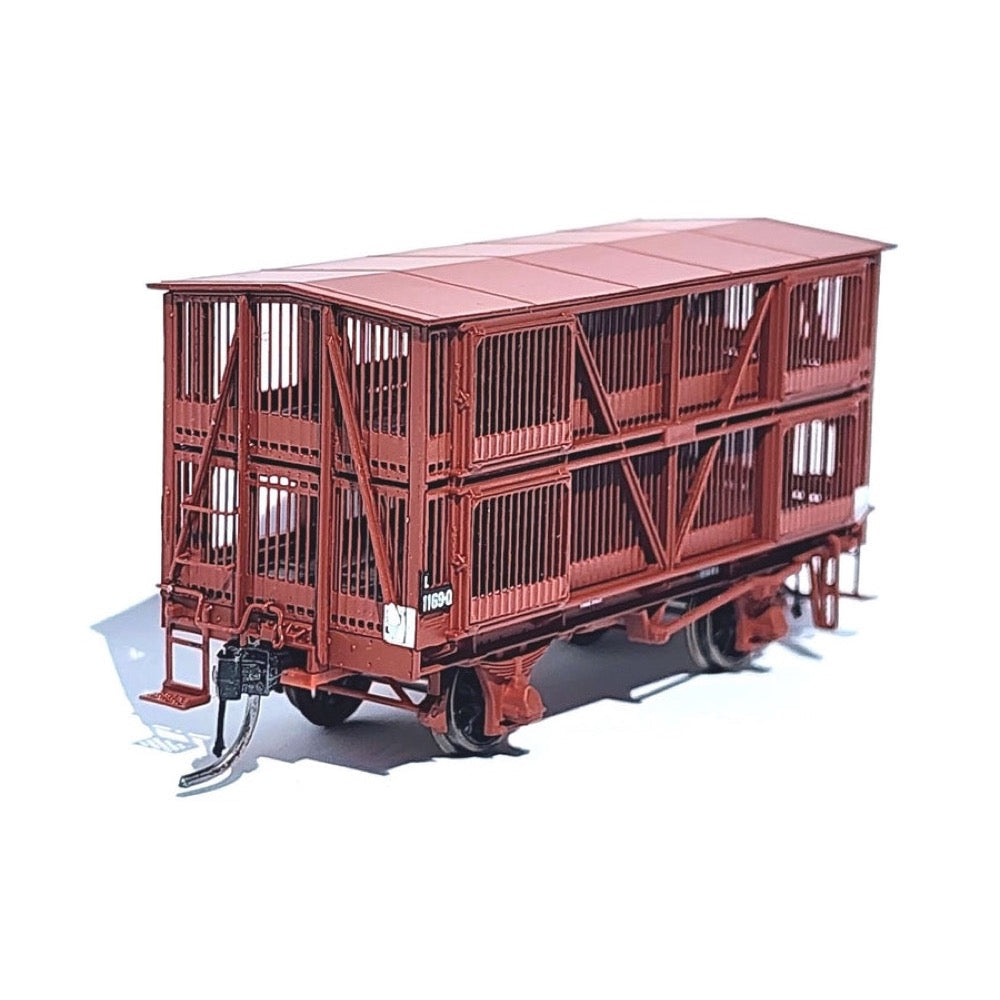
On Track Models LSV-02 Victorian 4 Wheel L Sheep Wagon 1960's Pack
On Track Models LSV-02 Victorian 4 Wheel L Sheep Wagon 1960's Pack
Features
- Six HO Scale Victorian L Sheep Vans
- Style: Six 4 Wheel Sheep Vans with Gable Roofs
- Wagon numbers: L 633, L 707, L 747, L 787, L 900, L 1011
- Era covered: 1960's
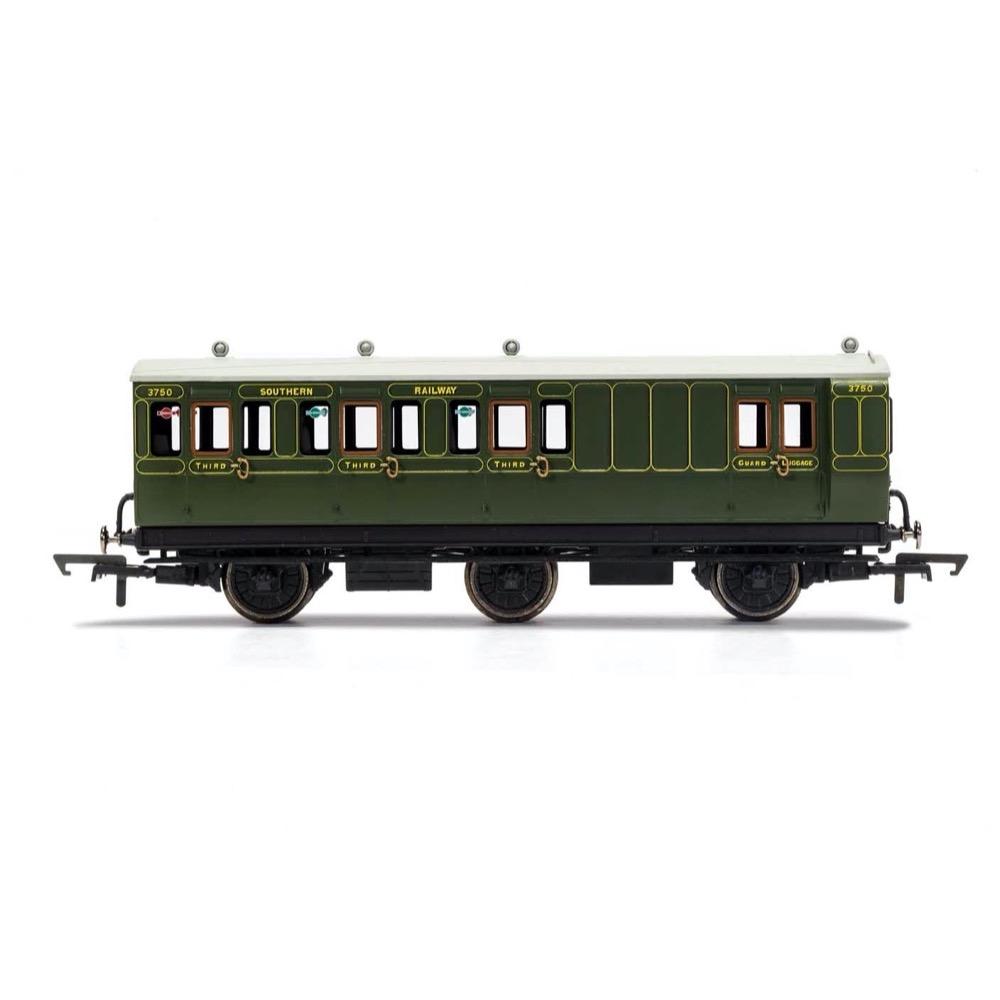
Hornby R40087 OO SR 6 Wheel Coach Brake 3rd Class 3750
This six wheeled coach is a representation of the many which served on the Southern Railway (SR) having been inherited from its predecessors such as the London & South West Railway (LSWR) and the South Eastern and Chatham Railway (SECR).
Small coaches such as this six wheeled coach proved especially good at branch line work where their small size enabled the traversing of tight radius curves, whilst lower passenger numbers meant their small size was more acceptable and enabled trains to be hauled by smaller engines.
This SR coach is modelled as having step boards to enable access at stations with low platforms and electric lighting.
Specification
- Item Length - Without Packaging (cm): 16
- Item Height - Without Packaging (cm): 5
- Item Width - Without Packaging (cm): 3.5
- Item Weight - Without Packaging: 0.07
- Item Scale: 1:76 Scale 00 Gauge
- License: No
- Finish: Painted
- Colour: Green
- Gauge: OO
- Operator: SR
- Designer: SR
- Livery: SR
- Minimum Curve (mm): Radius 2
- Number of Parts: 1
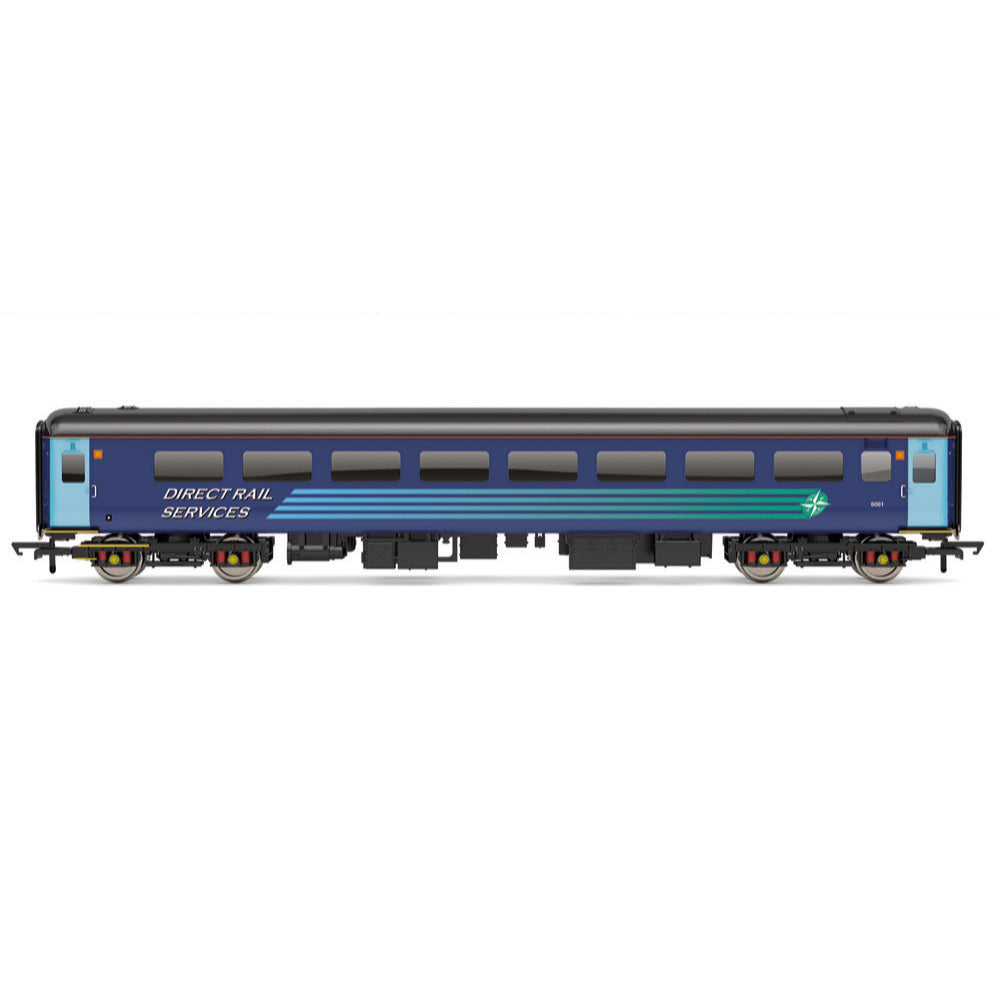
Hornby R40331A OO DRS Mk2F Standard Open 6001
The Mk2 Coach was introduced to the British Railway in 1964, designed to be stronger and more resistant to corrosion than their predecessors yet also reducing maintenance costs. A revised painting method coincided with a switch from BR maroon and Southern Region dark green to a blue and grey livery.
1876 Mk2 Coaches were produced by BREL at Derby Litchurch Lane Works between 1963 and 1975, with many remaining in service performing departmental work and charter services. Mk2 Coaches were also widely exported and remain in mainline service in New Zealand as of 2020. Coaches and multiple units based upon the Mk2 design have also operated in Ireland, Taiwan and Kenya.
Specifications
- Item Length - Without Packaging (cm): 26.8
- Item Height - Without Packaging (cm): 5
- Item Width - Without Packaging (cm): 3.5
- Item Weight - Without Packaging: 0.13
- Item Scale: 1:76 Scale 00 Gauge
- Finish: Painted
- Colour: Blue
- Operator: DRS
- Designer: BR
- Livery: DRS
- Minimum Curve (mm): Radius 2
- Number of Parts: 1
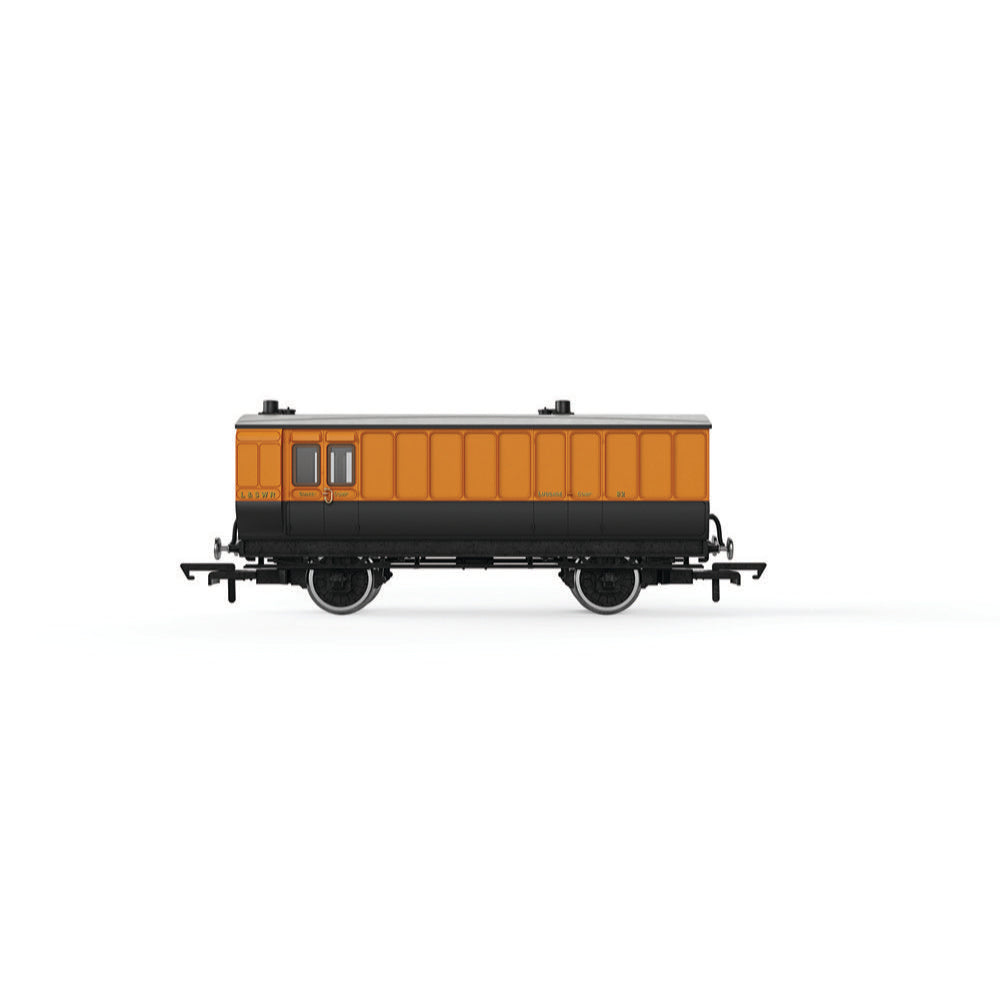
Hornby R40295 OO LSWR 4 Wheel Coach Passenger Brake 82
Brake Baggage Coaches combined the installation of a brake with the ability to move luggage as well. This LSWR model features the addition of oil lamps and step boards, lamps easing visibility and the step board designed to enable access at stations with low platforms.
Include
- 1x Rolling Stock Coach
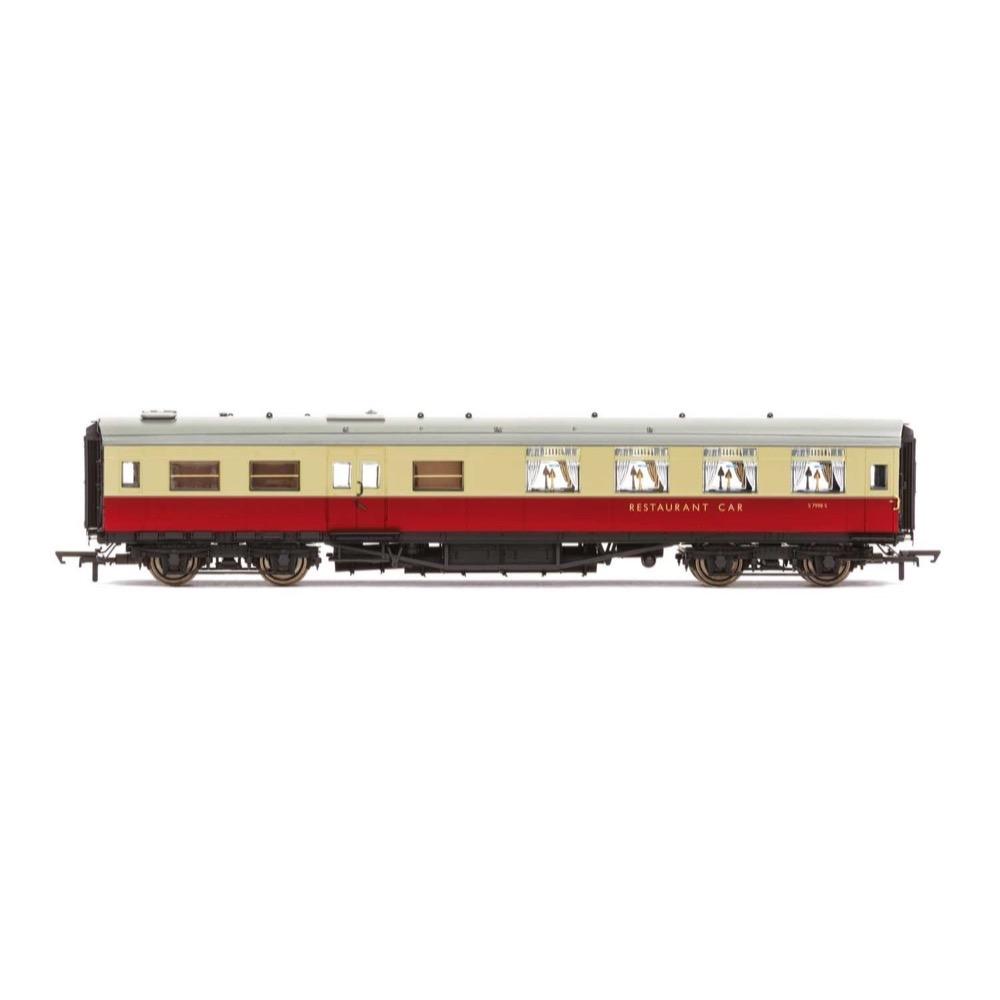
Hornby R40029 OO BR Maunsell Kitchen/Dining First S7998S
Southern Railway inherited a variety of coach stock that had been used by other railway companies pre-grouping. Furthermore, Southern Railway continued to build new coaches to the design of the three largest companies. The Maunsell carriage was intended to be the standard carriage design for use across the Southern Railway lines, incorporating the best features of each of the former companies' designs. Maunsell Coaches were constructed between 1925 and 1936 at Eastleigh, with 1200 being built.
The standard coach design was 59ft long and made from wood with steel sheeting. One feature of the coaches was the low window placement which while less of an issue when seated, meant that whilst stood up it was difficult to see outside the coach without ducking. In 1929 this feature was amended, resulting in the introduction of 'high window' coaches, although on corridor coaches the low windows remained on the compartment side of the coach. In operation, coaches were grouper together to form sets. The intention was that coaches would remain in these sets for long durations, with the set numbers appearing at the brake end of the set. 139 sets were created with loose stock being used to supplement the sets on busier trains.
In August 1925, construction began on six First Class Dining Saloons for the Western Section. The first of a batch of twenty-six such vehicles under Diagram 2651, they were intended for the London-Bournemouth, London-Portsmouth and London-Exeter services and were of the low-windowed design. Seating twenty four passengers in four seating bays at one end and the kitchen, pantry, service vestibule and side corridor at the other, a set of double loading doors opened into the vestibule, while the passengers accessed the Restaurant from the gangways at either end.
Four further low windowed Dining Saloons were completed between July and December 1929, intended for the inter-regional through sets and in May/June 1930, ten further Dining Saloons entered service, under Order 464, on West Country workings.
Specification
- Item Length - Without Packaging (cm): 24.3
- Item Height - Without Packaging (cm): 5
- Item Width - Without Packaging (cm): 3.5
- Item Weight - Without Packaging: 0.13
- Item Scale: 1:76 Scale 00 Gauge
- License: No
- Finish: Painted
- Colour: Cream
- Gauge: OO
- Operator: BR
- Designer: Maunsell
- Livery: BR Crimson and cream
- Minimum Curve (mm): Radius 2
- Number of Parts: 1
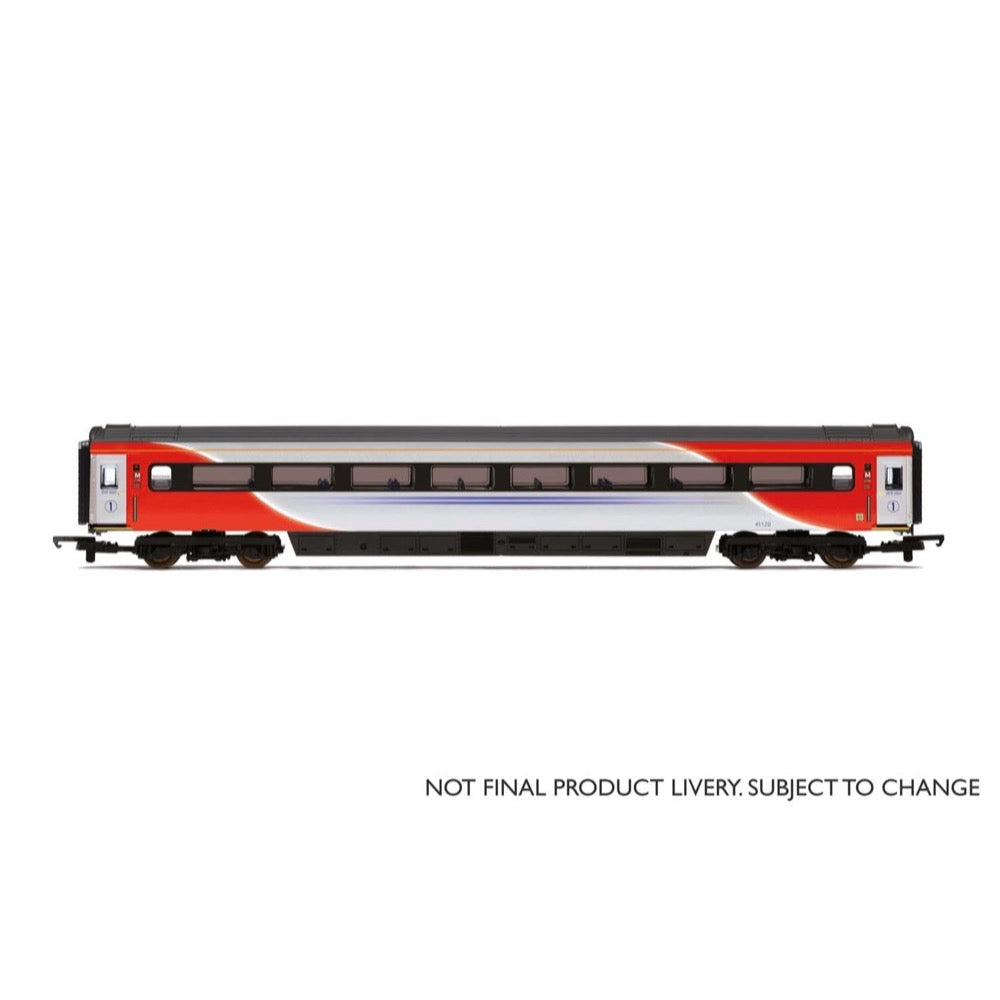
Hornby R4929A LNER Mk3 Trailer First Open TFO 41150 - Era 11
LNER Mk3 Trailer First Open TFO 41150 - Era 11
Specifications
- Finish: Pristine
- Livery: Red & Silver
- Minimum radius curve: Radius 2
- Coach type: British Railways Mark 3
- Operator: London North Eastern Railway


